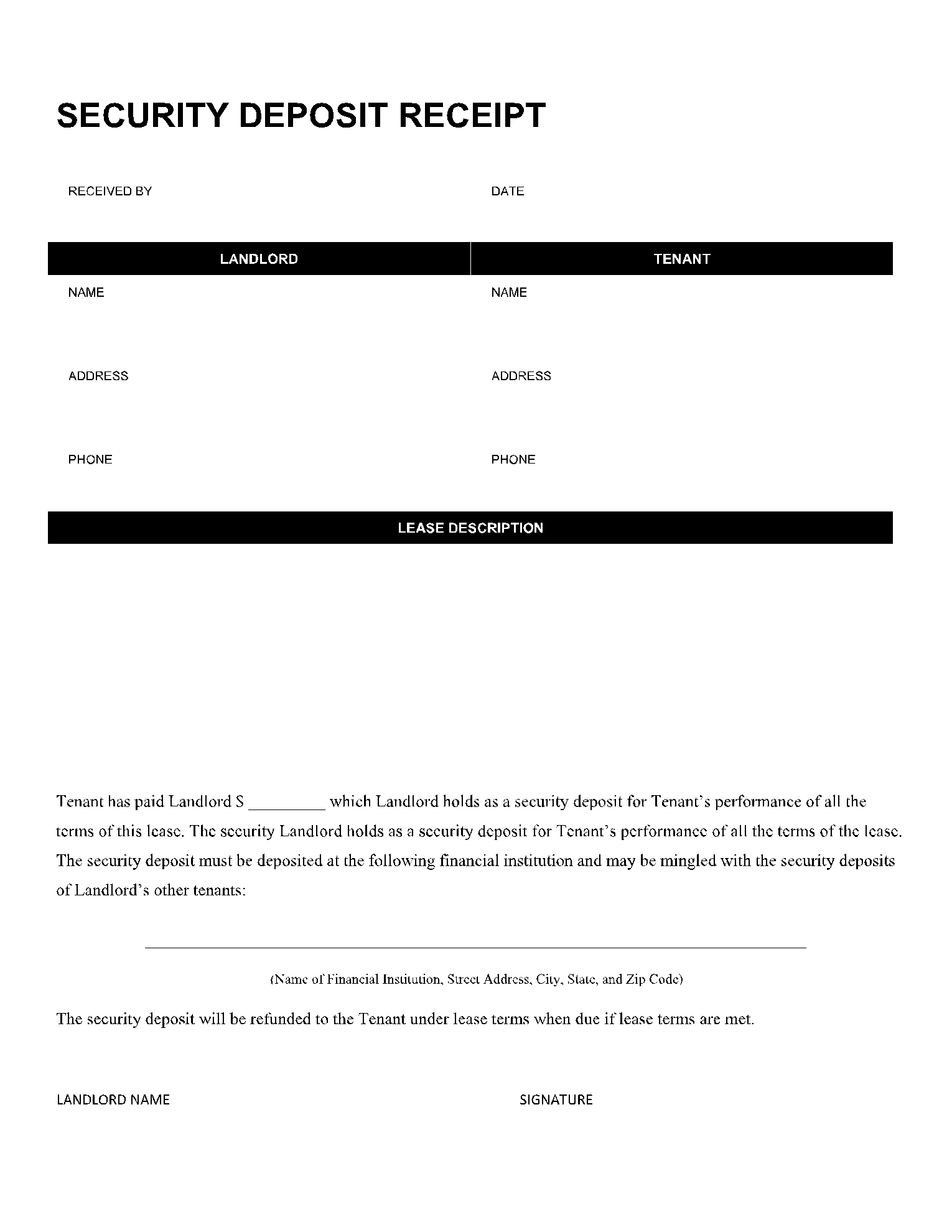When you sign a lease, you would be asked to pay a security deposit which is an administrative fee. Before you sign the document, it is essential to know what is a security deposit receipt, how much does it cost, what all does it cover, and most importantly when it comes back to you. So let's understand it step by step.
What Is a Security Deposit Receipt?
A security deposit receipt is a legal document that is often used in dealing with renting or leasing of houses. The document is given by the landlord to the tenant for the house he wants to live in. This acts as evidence of payment done by the tenant and to avoid any sort of misunderstandings in the future.
A security deposit receipt template is readily available online or the landlord would make one for you. The landlord and tenant can both keep this receipt in place with the original rent agreement. This will ensure everything is in place.
Also, various states have respective laws in place specifying the maximum limit of the security deposit to be charged. Both, the landlord and the tenant must ensure the deposit is in line with the respective laws.
Why Is Security Deposit Receipt Important for Landlords and Tenants?
Well, acknowledging the importance of a rental deposit receipt or security deposit receipt is crucial for all the parties. From the perspective of the landlord, it serves as a protection for them in case something happens to the property. From the perspective of the tenants, they have legal proof of the money and a sense of relief.
The security deposit receipt will be returned to the tenants once they move out of the property without any damages. Hence, having a security deposit receipt in place for both the parties makes things transparent, efficient, and truly a win-win situation for all.
What Are Included in a Security Deposit Receipt?
A security deposit receipt template may vary slightly depending on the landlord. However, the main essence of all would be the same. It primarily includes:
- Name and the address of the tenant.
- Name and address of the landlord.
- Company name of landlord (optional).
- The complete date and time.
- The exact amount of the security deposit.
- Signature of the tenant.
- Signature of the landlord.
- Bank account details of the landlord where the money is going.
If you are making a rental deposit receipt on your own, you need to ensure that the above-mentioned details are there for sure. Other than this, you can obviously add anything else if you require it. But having the above eight things is a must. You can even select readymade templates online in case you have less time.
What Are The Reasons For Not Getting Your Security Deposit Back?
As a renter, it is very important to leave the apartment in good shape. Make sure it is in a similar state in which you received from the landlord. While moving out, clean the house thoroughly. If you cause any damage, make sure you repair it.
However, if you have caused damage to the house and you do not repair it, then the landlord has the right to withhold your security deposit. He would give you the receipt of the charges and thereby reduce them from your security deposit.
On the other hand, if you do not cause any damage to the property, you are entitled to get a security deposit back after you move out.
Conclusion
A security deposit receipt is necessary while renting out the property to the tenant. If you need a template of security deposit receipt, you can check CocoSign to have one. Other than that, CocoSign offers different types of ready-made agreement templates for you to choose from.
